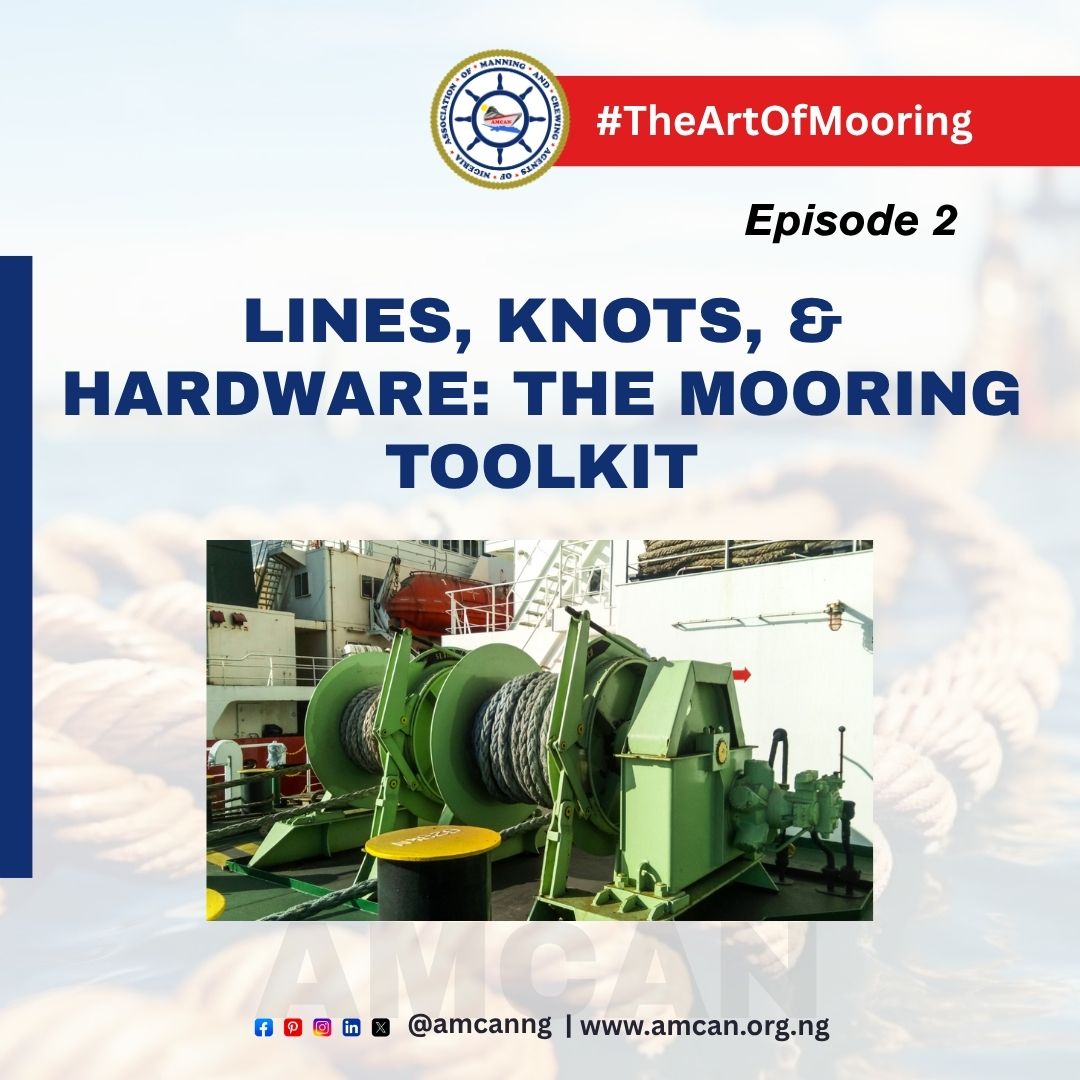Understanding the Tools That Hold the Ship Secure
In the world of seafaring, few things command more respect than a well-secured vessel. Mooring may seem like a routine task, but every experienced mariner knows it’s a blend of precision, timing, and trust in your tools. The ropes, knots, and equipment that keep a ship in place are far more than accessories — they are lifelines connecting a vessel to safety. In this second episode of The Art of Mooring series, we dive into the heart of that connection: the mooring toolkit.
At first glance, ropes and lines may appear simple. Yet, every strand has a story. Mooring lines are designed to withstand immense tension, absorb shocks, and endure constant exposure to saltwater, sun, and mechanical wear. The choice of rope can make all the difference between a vessel that rests safely at berth and one that drifts dangerously under stress. Traditionally, ropes were made from natural fibers like manila or hemp, valued for their grip and flexibility. However, modern shipping has embraced synthetic materials such as nylon and polypropylene, which offer greater strength, elasticity, and resistance to rot. Nylon, for example, is prized for its ability to stretch under heavy load, absorbing the shocks of wind and current, while polyester provides excellent durability with minimal stretch for more stable mooring conditions.
The art of selecting the right line goes hand in hand with understanding how to care for it. A good seafarer treats every mooring line with respect — coiling it properly after use, inspecting for frays or salt buildup, and avoiding sharp edges or excessive chafing. A single weakened strand can compromise the integrity of the entire rope, and that small oversight can quickly escalate into a major hazard. Regular maintenance, simple rinsing with fresh water, and correct storage go a long way in extending the life of mooring lines.
But a strong rope alone does not make a secure moor. The skill of the sailor comes alive in the knots they tie. Knots are the silent language of seamanship — quick, reliable, and adaptable to any situation. Each knot serves a distinct purpose, from securing a line to a bollard, joining two ropes, or adjusting tension. To the untrained eye, knots may all look the same; to a sailor, they are as different as fingerprints. Mastery of knots isn’t just a technical requirement — it’s an expression of confidence and competence. The simplest of knots, tied at the right moment, can hold thousands of kilograms of moving steel steady against wind and current.
Knot-tying is an ancient craft passed down through generations of sailors. It teaches patience, dexterity, and mindfulness. A cadet who can tie a bowline blindfolded or splice two lines neatly in rough seas is not only skilled but respected. The strength of a knot comes not just from the rope itself but from the precision of the sailor’s hands. In mooring, seconds matter, and a poorly tied line can mean the difference between safety and chaos.
Beyond ropes and knots lies another crucial part of the mooring toolkit: hardware. The ship’s winches, bollards, capstans, and fairleads are the mechanical extensions of a sailor’s hands. Understanding how these devices work — and how to use them correctly — is essential. Winches, for instance, provide mechanical advantage, allowing heavy lines to be tensioned or released smoothly. However, improper handling can result in snapped lines, equipment damage, or injury. Knowing when to ease tension, how to manage load distribution, and maintaining clear communication with the deck team are key practices during mooring operations.
Regular inspection and maintenance of mooring hardware are non-negotiable. Saltwater, moisture, and vibration constantly threaten to degrade metal surfaces. A seized winch or corroded fairlead can turn a simple operation into a dangerous one. Seafarers must routinely grease fittings, check for alignment, and report any irregularities before they escalate. The health of mooring equipment is, in many ways, a reflection of a crew’s professionalism. A well-maintained deck not only ensures safety but also signals discipline, teamwork, and pride in the vessel.
One of the most overlooked aspects of mooring is the teamwork involved. A mooring operation is never a one-person task; it is a symphony of coordinated actions, communication, and trust. The crew handling the lines must work in perfect rhythm with the officer on the bridge, who adjusts the ship’s movement with precision. Clear commands, steady focus, and mutual understanding are essential. Every sailor has a role — the one coiling, the one casting, the one checking tension — and when each performs it well, the mooring is seamless.
For Nigerian seafarers, especially cadets entering the industry, understanding these fundamentals early can set a strong foundation for future success. The ropes and hardware may appear simple, but they embody centuries of maritime tradition and engineering. They represent responsibility — not just for the ship, but for every life aboard.
As technology continues to modernize shipping, automation may assist in mooring operations, but no machine can replace the seafarer’s instinct, experience, and judgment. Knowing how to handle lines, tie knots, and manage tension is as vital today as it was in the days of wooden ships and canvas sails. Each mooring is a test of skill and awareness, where small mistakes can have large consequences.
In the end, mastering the mooring toolkit isn’t just about learning equipment — it’s about cultivating discipline, respect, and confidence in the elements that hold the ship steady. Every line cast, every knot tied, every winch turned is part of the same story: a sailor’s quiet command over forces far greater than themselves.
So, as this series continues, remember that behind every successful voyage lies the humble rope — stretched, tested, and trusted — a symbol of the bond between sailor, ship, and sea.


Leave a comment